From colonial to craftsman homes: How 18 popular American architectural styles evolved
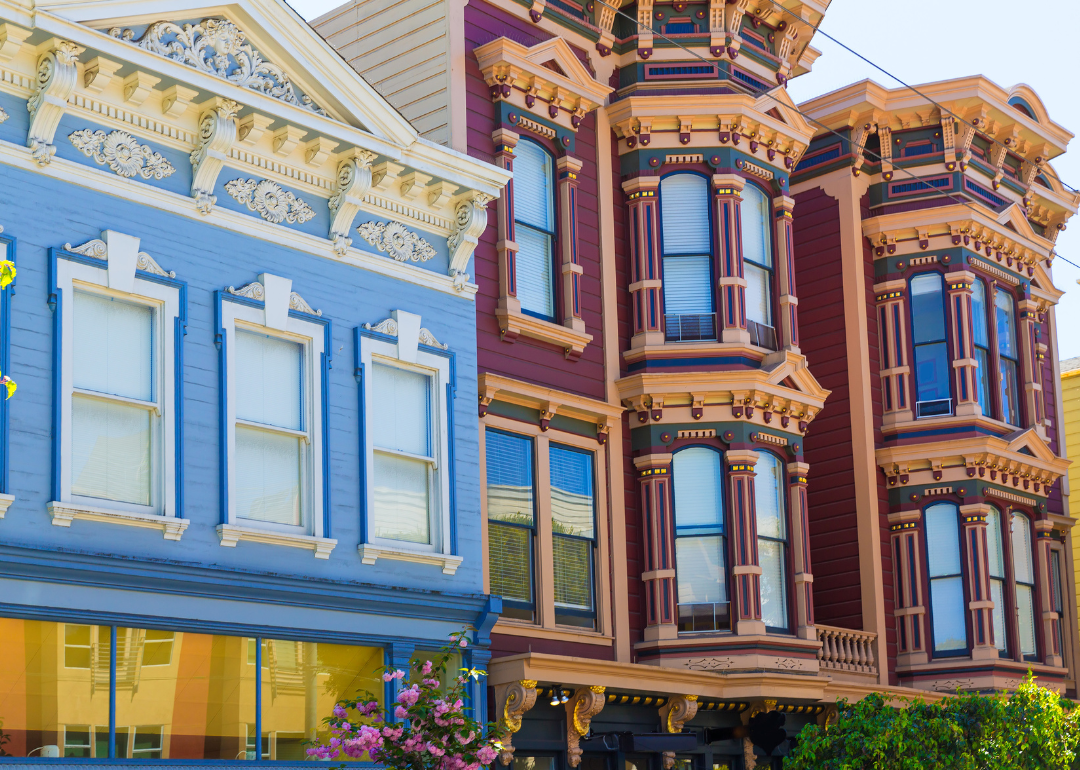
Canva
From colonial to craftsman homes: How 18 popular American architectural styles evolved
Exterior of a row of colorful Victorian homes with intricate wood trim.
The story of American architecture has followed much of the same path as art has over the past 400 years. Art, as a whole, tends to move from classical to abstract, and architecture is no exception. From the American colonial homes of the 1600s and the Cape Cod style that defined the first housing developments to the Pueblo revival homes of the American Southwest, American architecture has undergone profound changes over the centuries.
The design and style of homes throughout the years have taken shape and evolved based on housing needs, population growth, and materials available for construction. Older buildings, whether in the U.S. or further afield, significantly influence today’s home designs.
To dive deeper, New Jersey Real Estate Network compiled a list describing the evolution of 18 popular architectural styles that have shaped U.S. cities and towns.
![]()
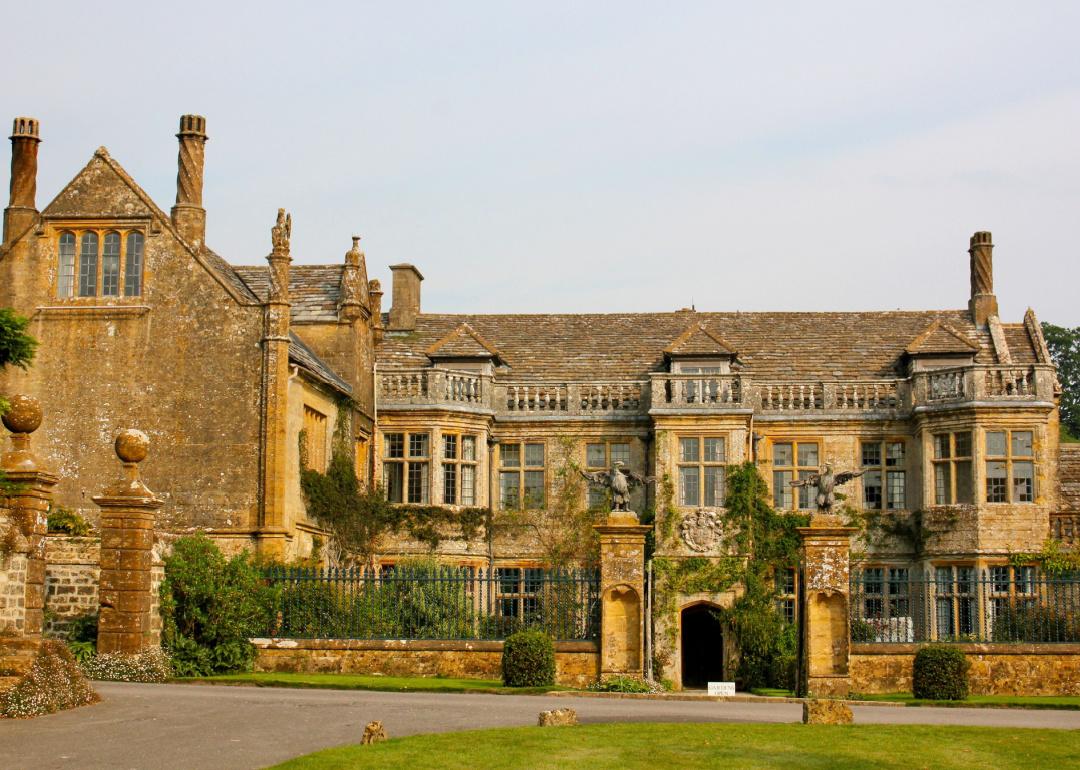
Carolyne Parent // Shutterstock
Stuart/Jacobean (1604–1713)
Mapperton House, a Jacobian Mansion in England.
Jacobean-style buildings aren’t prevalent in the U.S. partly due to high construction costs. Only the very affluent could afford this style of architecture—which is characterized by steeply pitched, front-facing gables and decorative brick infilling. In this architectural style, massive chimneys sit atop steep-pitched roofs and tall, narrow windows with multi-pane glazing. Think of ivy-coated universities with Renaissance-style details.
Most Jacobean buildings can be found on the East Coast, particularly in the Maryland and Virginia areas, where the oldest documented brick dwelling in the United States, Bacon’s Castle, is located.
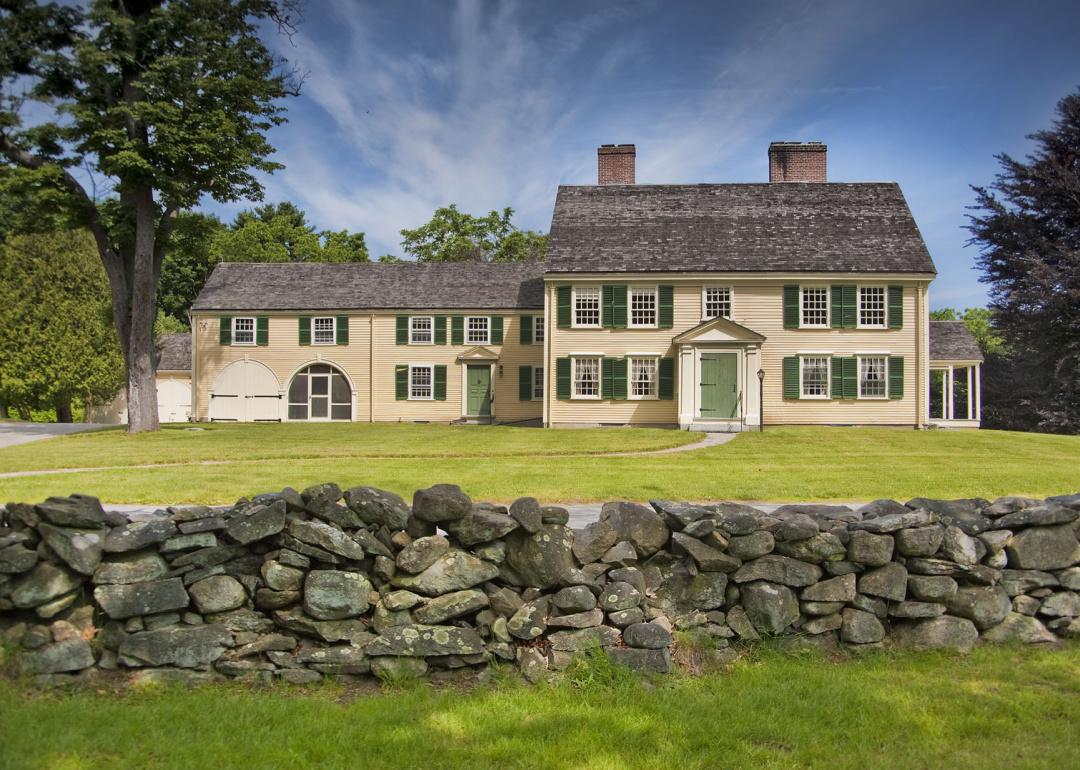
Christian Delbert // Shutterstock
Colonial (1600s–1700s)
New England colonial home with stone wall.
American colonial architecture is a style that remains one of the most ubiquitous home architecture styles today. British colonists introduced it in the U.S. in the 1600s and 1700s, but this style fell out of fashion during the American Revolution.
In the late 1880s to mid-1950s, there was a colonial revival, with two- to three-story family homes in muted neutral colors constructed from quality materials like wood and brick. Simple designs with minimal embellishments further define the style. Colonial homes often include symmetrical front entrance columns, a central wood staircase, and the same number of windows on each side of the door.
Elvis Presley’s Graceland exemplifies the American colonial home. On the other hand, French and Spanish colonial homes are slightly more ornate, usually with elaborate iron balconies, stairs, and entrances. Also distinct from American colonial homes, Dutch colonial homes often include a gambrel roof, overhanging eaves, and wooden shutters.
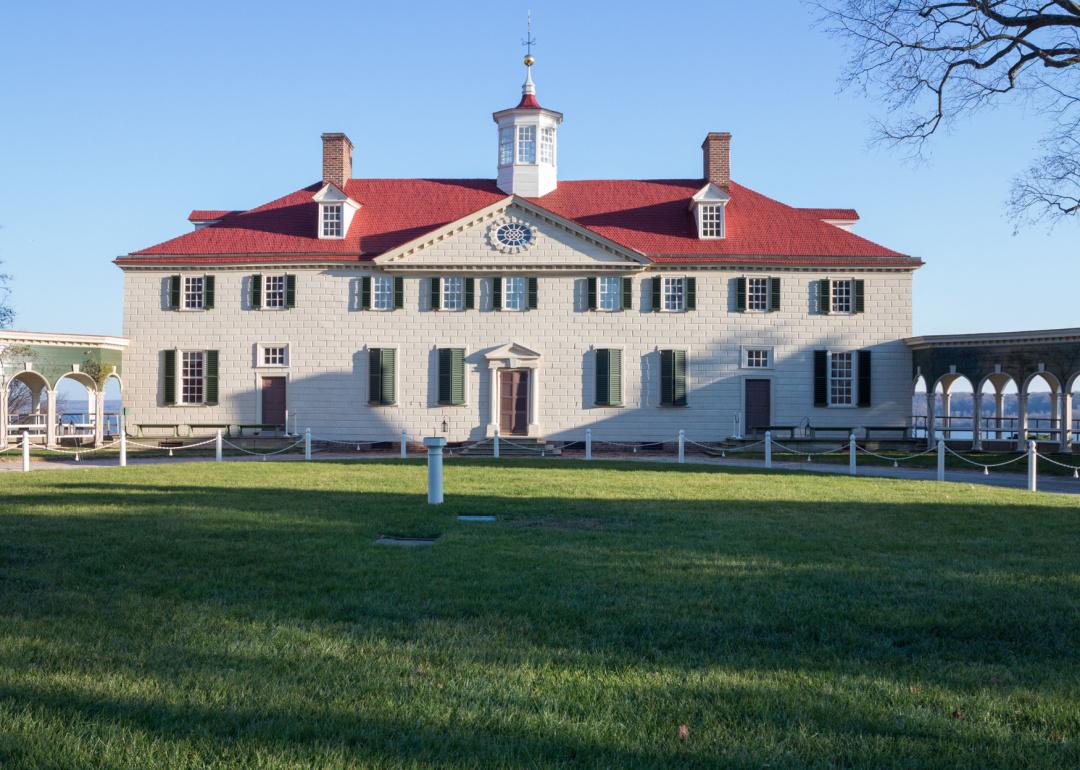
Steve Heap // Shutterstock
Georgian (1714–1820)
Historic George Washington home at Mount Vernon.
Earlier European styles that connote decorum and sturdiness inspire Georgian architecture in the U.S. This style features clean lines, symmetrical facades, double-hung windows, paneled doors with pilasters, and dentil moldings at the cornice.
One of the most famous examples of Georgian architecture is Mount Vernon, which features one Georgian facade; the other is neoclassical. The Longfellow House Historic Site, the home of Henry Wadsworth Longfellow and located in Cambridge, Massachusetts, is one of the most distinct examples of the style.
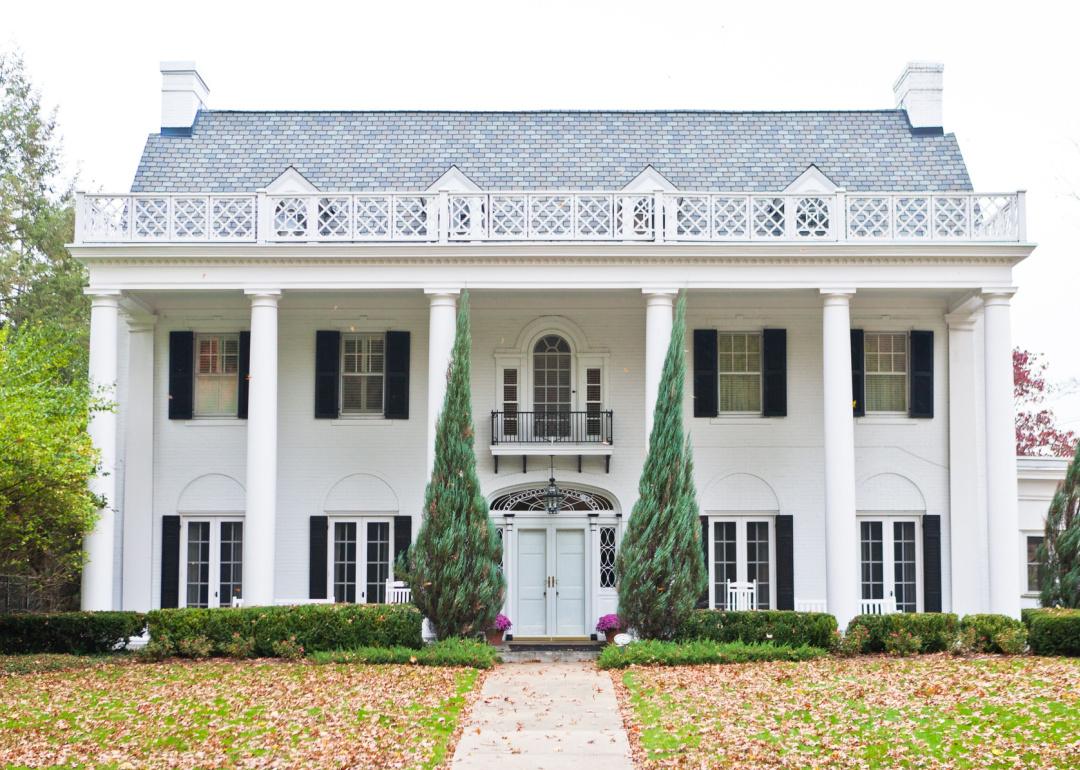
aviahuisman // Shutterstock
Neoclassical (late 1700s–early 1800s)
Exterior Neoclassical mansion with white columns and black shutters.
After the American Revolution, neoclassical architecture that harkened back to Greek and Roman architecture became popular, representing a new kind of classicism for a country with new freedom. This style is grand in size, featuring a full-height porch with dramatic columns, domed or flat roofs, and simple geometric forms with Greek or Roman detailing.
The White House is the country’s most well-known neoclassical building, and many Southern plantations are also in this style.
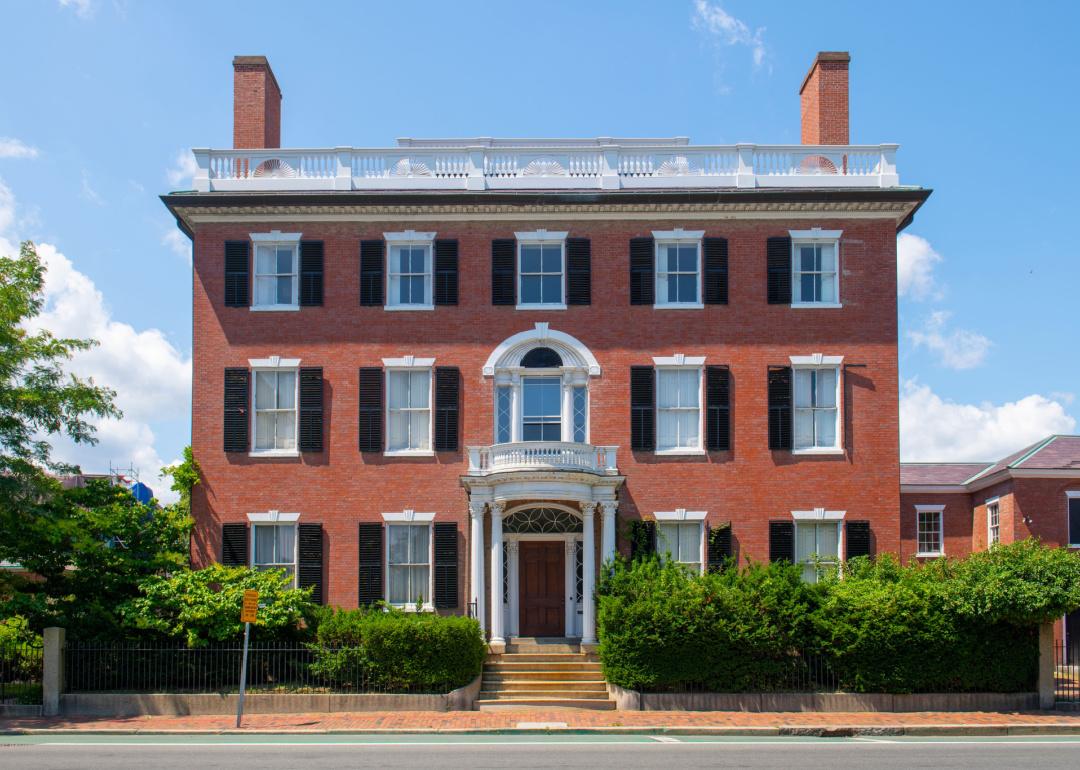
Wangkun Jia // Shutterstock
Federal townhouse (1780–1830)
Exterior Andrew Safford House in Salem, Massachusetts.
Federal-style homes are similar to Georgian style but have a delicate ornamentation that sets them apart. Their layouts are typically built around a central hall with an elliptical fanlight and two flanking windows around the door. Palladian windows, which are three paneled and feature an arch over the center panel, hang from each floor.
Federal-style details are more delicate, slender, and finely drawn than Georgian-style homes. The style also features swags, garlands, and urns. The federal style has more elements, such as the front door fanlight window.

EQRoy // Shutterstock
Victorian (1837–1901)
Victorian houses in Cape May, New Jersey.
The Victorian style arrived during the Industrial Age, when factories started producing metal house parts and creating mass-produced wood trim. Additionally, advances in technology allowed for vibrant colors of paint. Victorian homes are marked by ornamentation, featuring elaborate woodwork and trim, towers, turrets, dormer windows, and steep, gabled roofs, and partial or full-width porches.
One of the most famous examples of Victorian architecture in the United States are the Painted Ladies, found at Alamo Square in San Francisco.
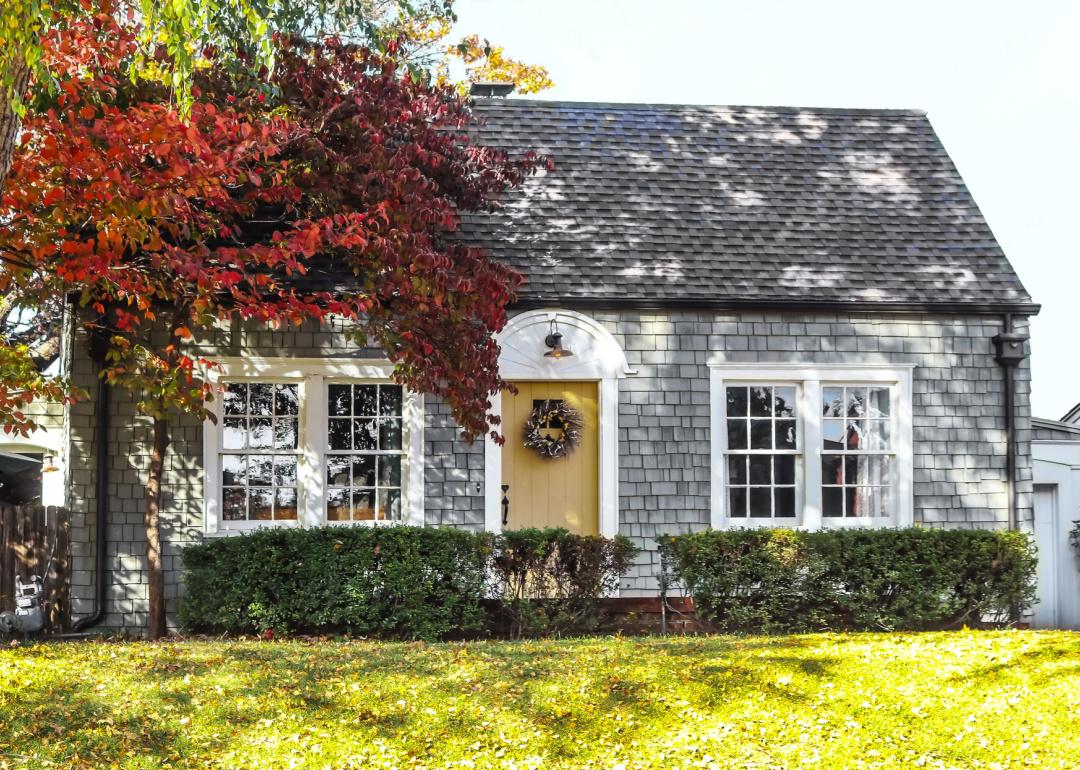
Vineyard Perspective // Shutterstock
Cape Cod (mid-1800s)
Cape Cod shingle cottage.
Cape Cod homes originated in Cape Cod, Massachusetts. Though similar to British or American colonial homes, they are built of wood and stone to withstand the Northeastern weather. They’re typically single story and are modest in size compared to American or British colonial homes. Cape Cod homes were revived in the 20th century by adding attic lofts and dormer windows.
Perhaps the Cape Cod style’s most significant influence on architecture was in Levittown, New York, home to the first major housing development, which consisted of more than 17,000 virtually identical Cape Cod homes.
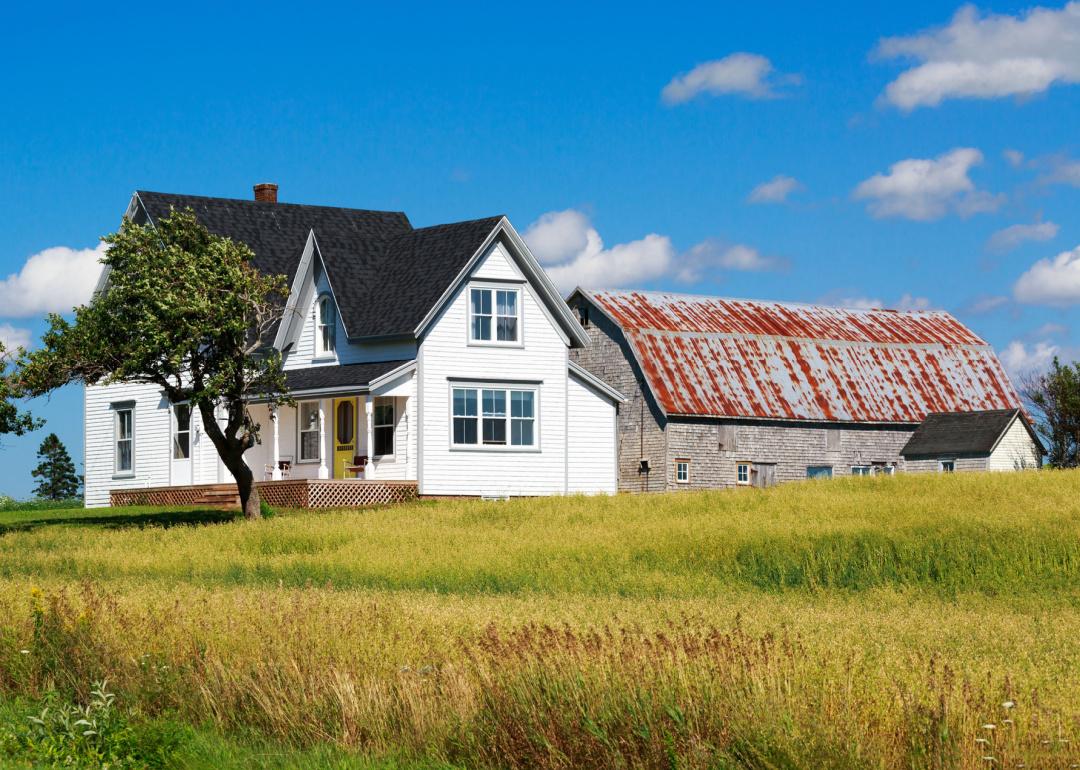
one pony // Shutterstock
Farmhouse (mid-1800s)
White farmhouse sits in a field with barn in rear.
The American farmhouse style leads with practicality. Farmhouse-style homes are typically situated on actual farms and in rural areas. This style rose to popularity in the mid-19th century with the advent of the railroad, which could transport manufactured materials to rural areas. They often feature large front porches, rectangular floor plans, natural wood and stone materials to keep out wind and moisture, a mixture of formal and informal living spaces, and few and small windows.
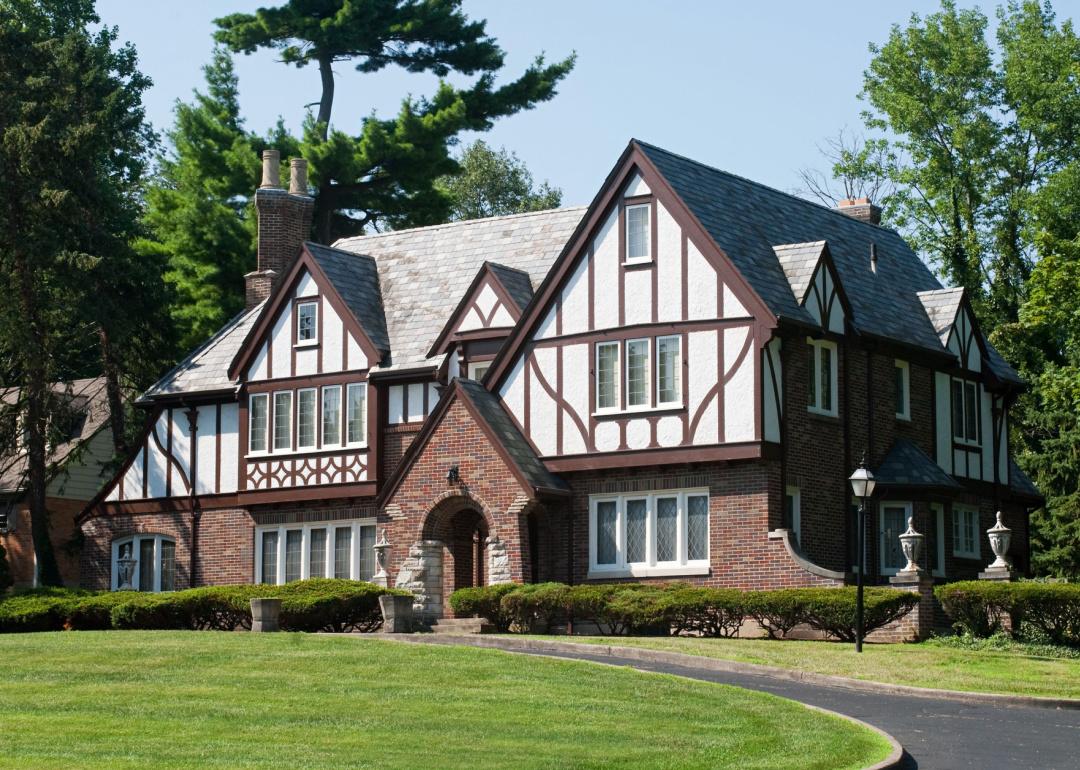
Susan Law Cain // Shutterstock
Tudor (1890–1940)
A Tudor-style home sits behind a curving driveway.
Tudor-style architecture is one of the easiest styles to spot. Typically situated in wealthy suburbs, Tudors once garnered the nickname “Stockbroker’s Tudors.” These homes are characterized by steeply pitched roofs, often with multiple overlapping, front-facing gables of varying heights. Exteriors are usually brick, accented with decorative half-timbering with stucco or stone filling in the spaces between the boards. The windows of a Tudor feel distinctly Medieval—typically tall and narrow with multiple panes. They also have decorative chimney pots.
Ultimately, they were expensive to build, which led them to go out of style following World War II. Frank Lloyd Wright designed the Nathan Moore House in Oak Park, Illinois, one of the country’s most famous Tudors.
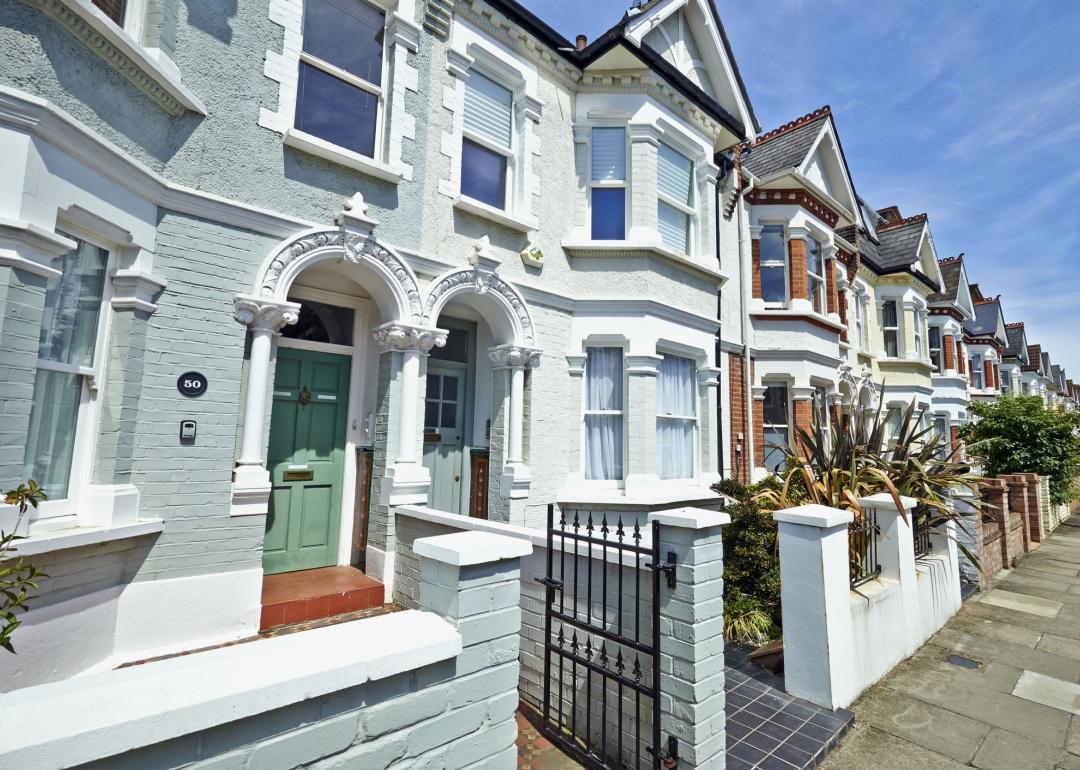
CapturePB // Shutterstock
Edwardian (1901–1910)
London street of early 20th century Edwardian terraced houses.
Edwardian architecture is similar to Victorian style, but Edwardian homes tend to be shorter and simpler. Edwardian homes came into fashion in the early 20th century, closer to the craftsman movement. In addition to being less ornate than Victorian-era homes, Edwardians are often lighter in color. After the invention of gas and electric lighting, designers were not concerned with soot and were free to veer away from dark colors. Later, Edwardian homes also tended to feature extended chimney stacks.
Many Edwardian-style homes can be found in San Francisco areas that rebuilt after the city’s fire of 1906, such as in the South of Market, downtown, and Mission neighborhoods.
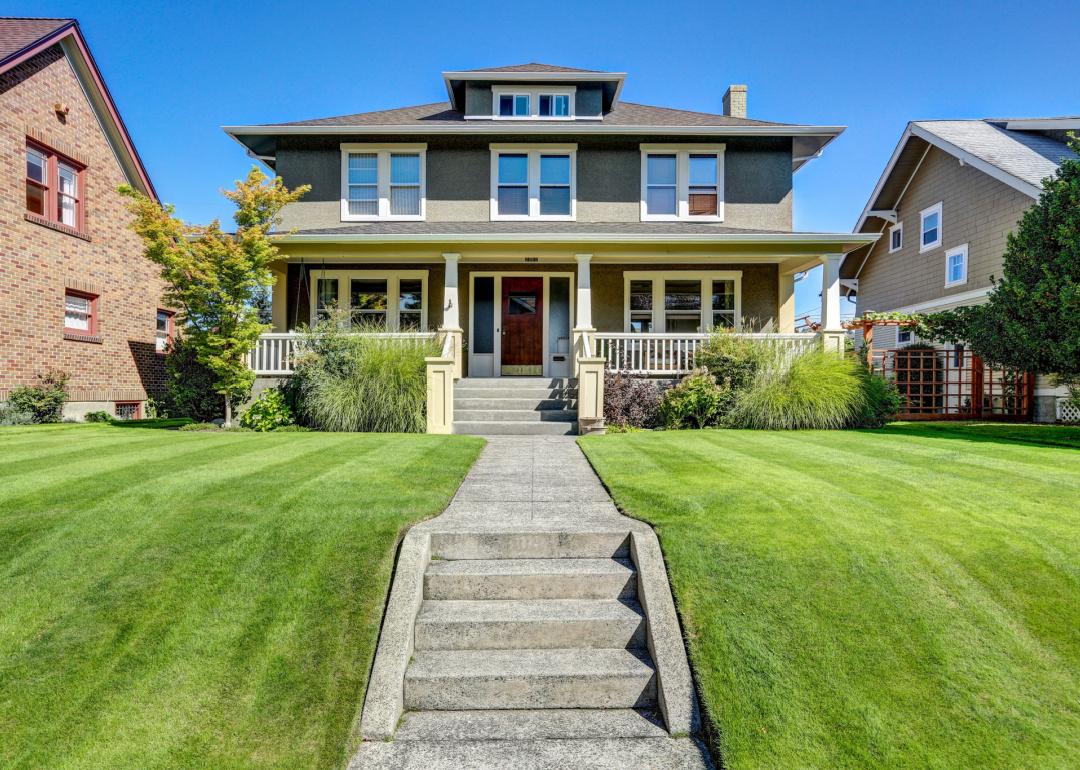
Artazum // Shutterstock
Craftsman (1900–1929)
Craftsman-style house with column porch.
After the Industrial Revolution, the appetite grew for handcrafted art in home style and design. Craftsman architecture is part of the Arts and Crafts design trend that focuses on simplicity in design to highlight the skill of craftsmen. As a result, this architectural style is often defined by low-pitched roofs with overhanging eaves; heavy, tapered columns; covered front porches; woodwork that includes exposed beams; and natural tones like green, brown, and taupe.
Many of the most famous craftsman houses in the country are in Pasadena, California, and were designed by brothers Charles and Henry Greene, who designed famed houses such as the Gamble, the Blacker, and the Duncan-Irwin.
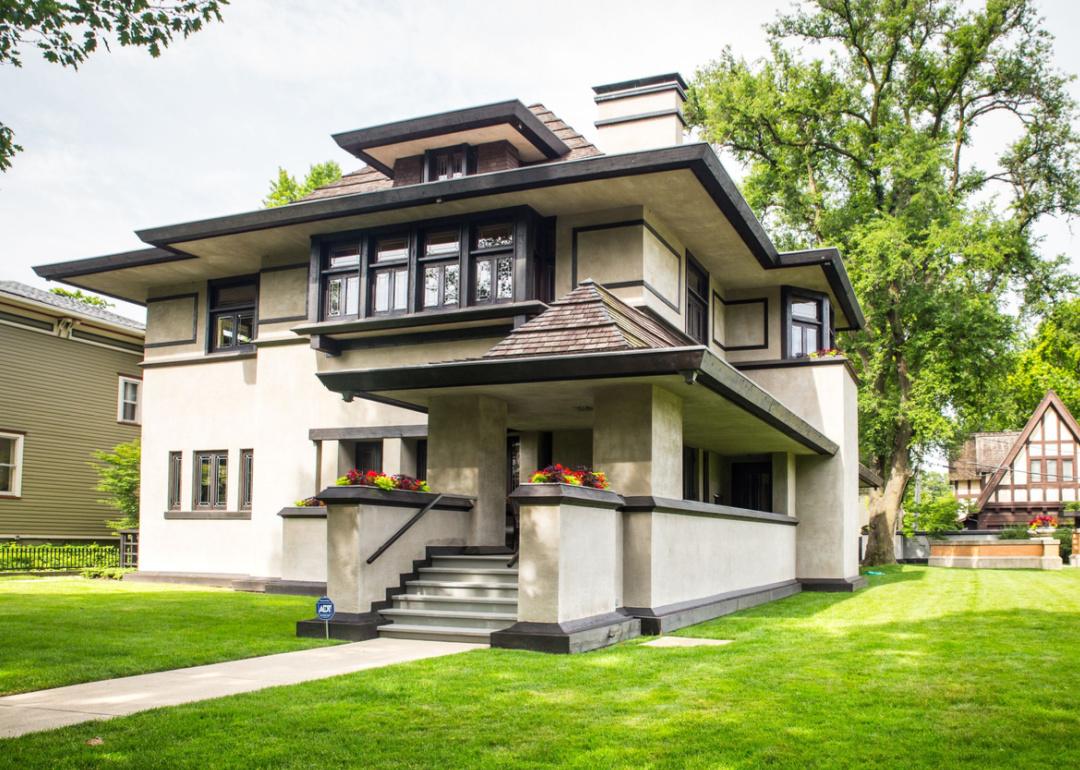
littlenySTOCK // Shutterstock
Prairie (1900–1970s)
Frank Lloyd Wright designed house in Oak Park, Illinois.
Frank Lloyd Wright is largely credited with being the father of prairie-style architecture in the United States. Prairie-style architecture grew from the craftsman movement and found inspiration from the flat landscapes of the Midwest.
One of the most famous examples of prairie-style architecture is the home Wright built for businessman Frederick Robie in Chicago’s Hyde Park neighborhood in 1910. The house has many characteristics of the style, defined by abundant natural light; brick or stucco exteriors; open, asymmetrical floor plans; and connected indoor and outdoor spaces. Wright is most famous for Fallingwater, a Mill Run, Pennsylvania home, and the Guggenheim building in New York.
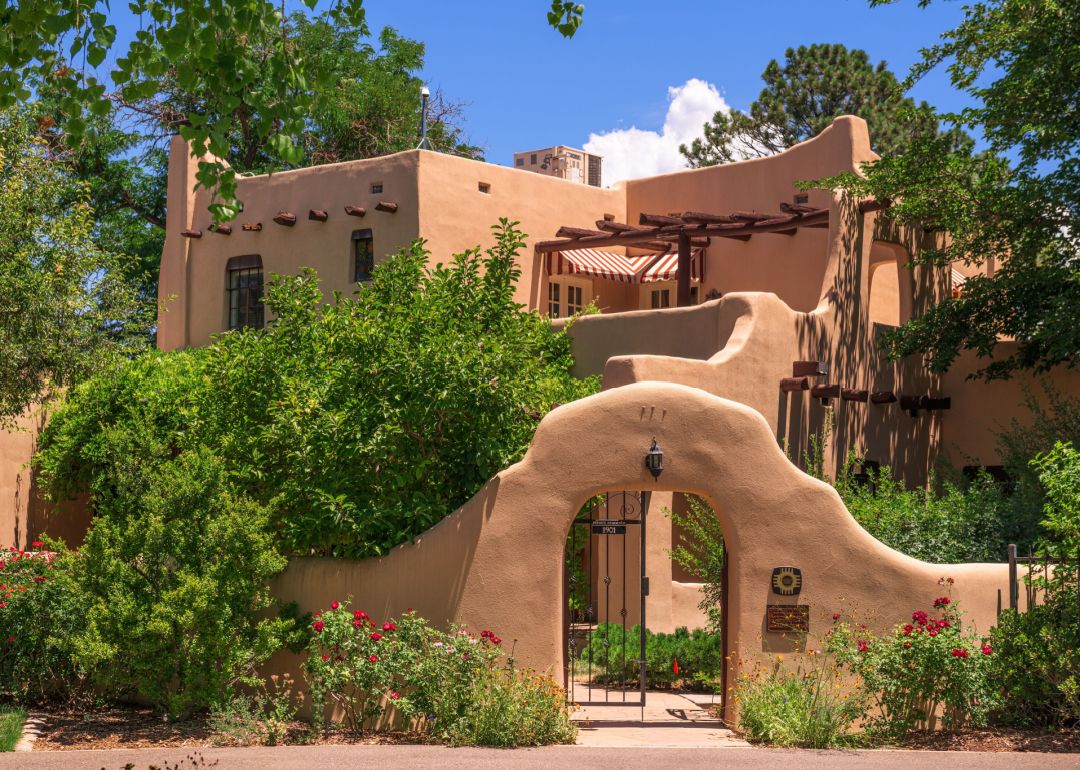
Sean Pavone // Shutterstock
Pueblo revival (1920s–1930s)
Historic University of New Mexico house in Albuquerque, New Mexico.
Structures designed by the Pueblo Native Americans, the building of which began in A.D. 750, inspired Pueblo revival architecture. These homes are typically low-profile structures made of mud, concrete, stucco, or mortar, with thick walls to protect occupants from extreme desert weather. They also are characterized by the use of wood for heavy doors, ceiling beams, and porch posts, have enclosed courtyards, rounded exteriors with square windows, and flat or sloping roofs with parapets.
Some famous examples are a home on Las Acequias Farm, located north of Santa Fe, New Mexico, designed by architect John Gaw Meem, and La Fonda Hotel in Santa Fe, which was built in 1922.

allouphoto // Shutterstock
Art deco (1930s)
Art Deco buildings in Miami, Florida.
Art deco architecture is one of the most distinct styles, made easily identifiable by sharp edges and stylized, geometric decorative details. It’s known as the first American architectural style that tried to look forward instead of back at historical styles and is a distinct break from the prevailing styles of the time. It typically has geometric ornamentation; a facade with a stepped outline; constructed with materials such as stucco, concrete block, glazed brick, or mosaic tile; and incorporation of decorative patterns such as chevrons, zigzags, or other geometric designs.
The Chrysler and Empire State buildings are some of the world’s most famous art deco buildings.
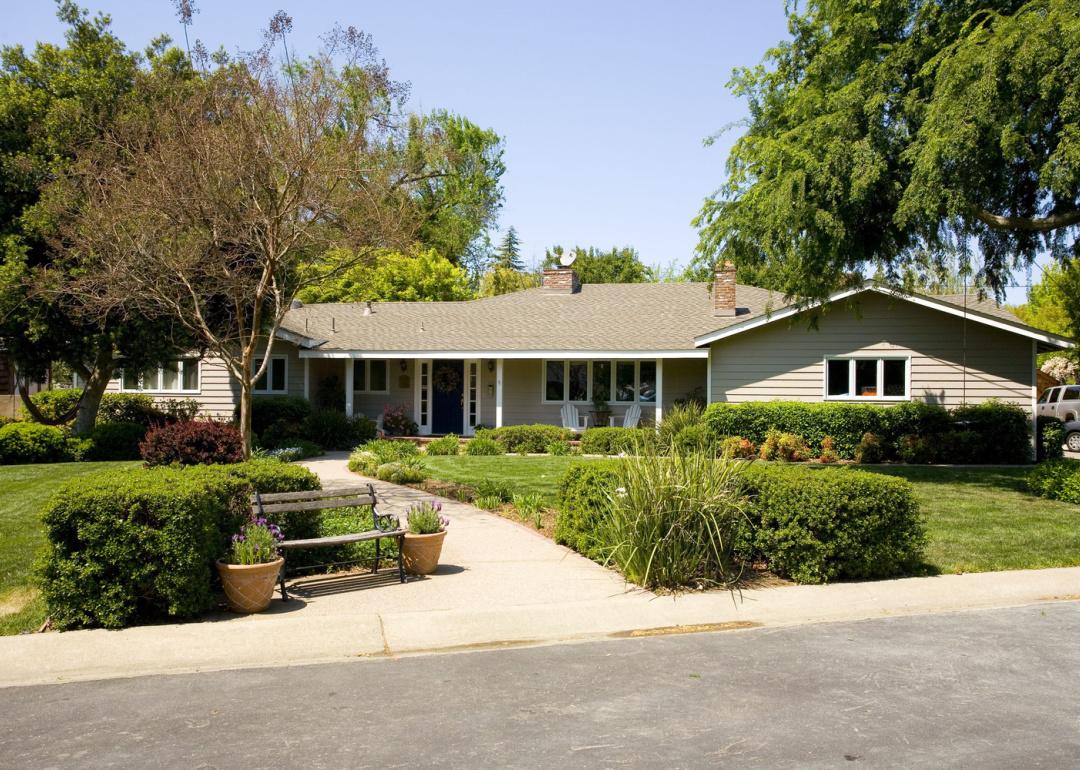
Steve Holderfield // Shutterstock
Ranch (1940s–1970s)
Exterior of yellow ranch house.
Ranch-style architecture has typically been sprawling single-story homes with wide, asymmetric facades, front-facing garages, and low-pitched roofs. The style is based loosely on Spanish colonial homes in the Southwest and influenced by car culture. They have since become one of the dominant house forms of the second half of the 20th century, particularly in the Western part of the United States.
One of the most famous ranch homes in the country is Rancho del Cielo, Ronald Reagan’s western White House near Santa Barbara, California, where he retired from public life.
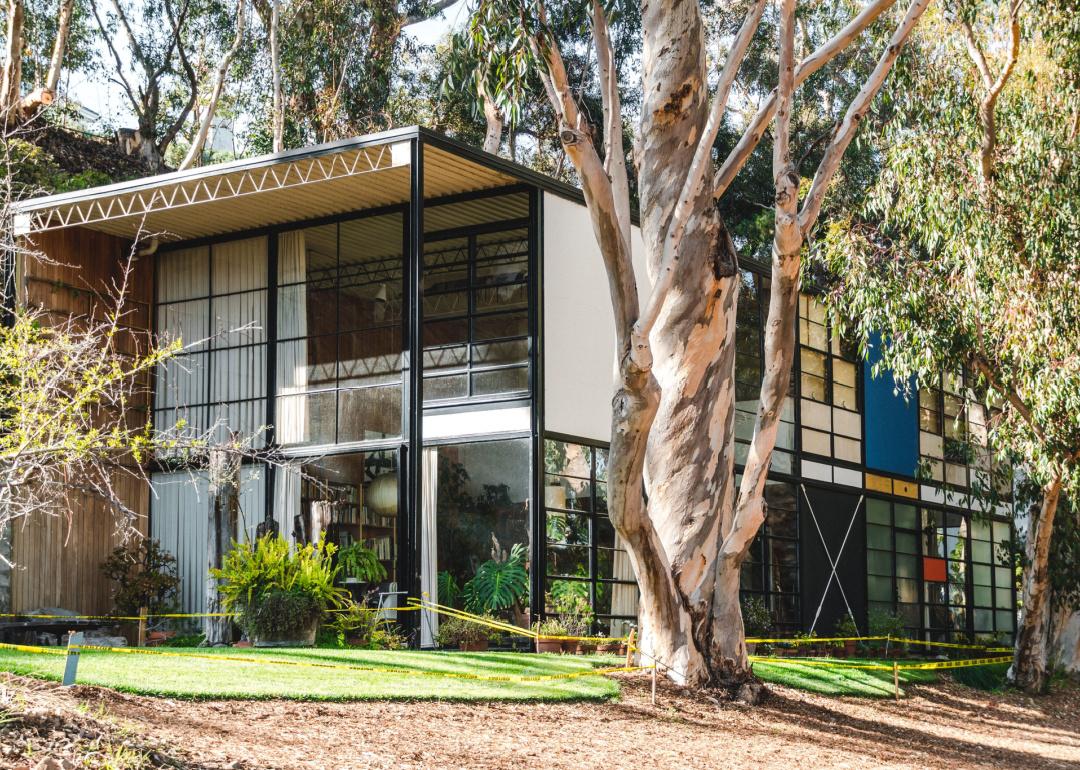
Stephanie Braconnier // Shutterstock
Midcentury modernism (1950s)
Eames House in Pacific Palisades, California.
Mid-century modern architecture has clean lines, minimal decoration, large open spaces, floor-to-ceiling windows, and outdoor access. This style gained popularity following World War II when soldiers returning from the war built midcentury modern homes across the country, and the style has become ubiquitous in the past 50 years.
The Eames House in Los Angeles is one of the most famous examples of midcentury modern design, constructed by husband-wife design legends Charles and Ray Eames. Philip Johnson’s Glass House in Connecticut also inspired a generation of architects in the style of midcentury modernism.
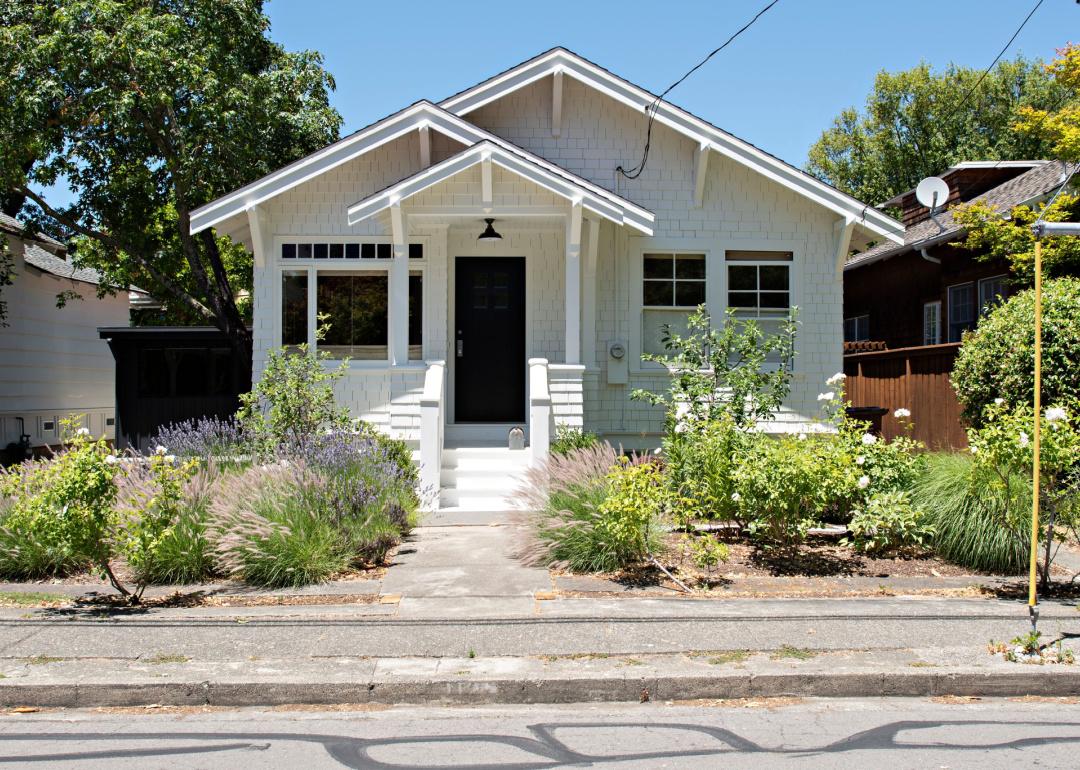
Lucy Autrey Wilson // Shutterstock
Bungalow (1950s)
White bungalow house.
Initially designed for the new working class created in the wake of the Industrial Revolution, the bungalow style home is one of the most popular designs for small, efficiently built homes. It is geared toward young families and first-time homeowners. Most popular in California, the homes usually have one-and-a-half stories; a low-pitched roof that slips over a front porch; wide overhangs of the roof; and square, tapered columns.
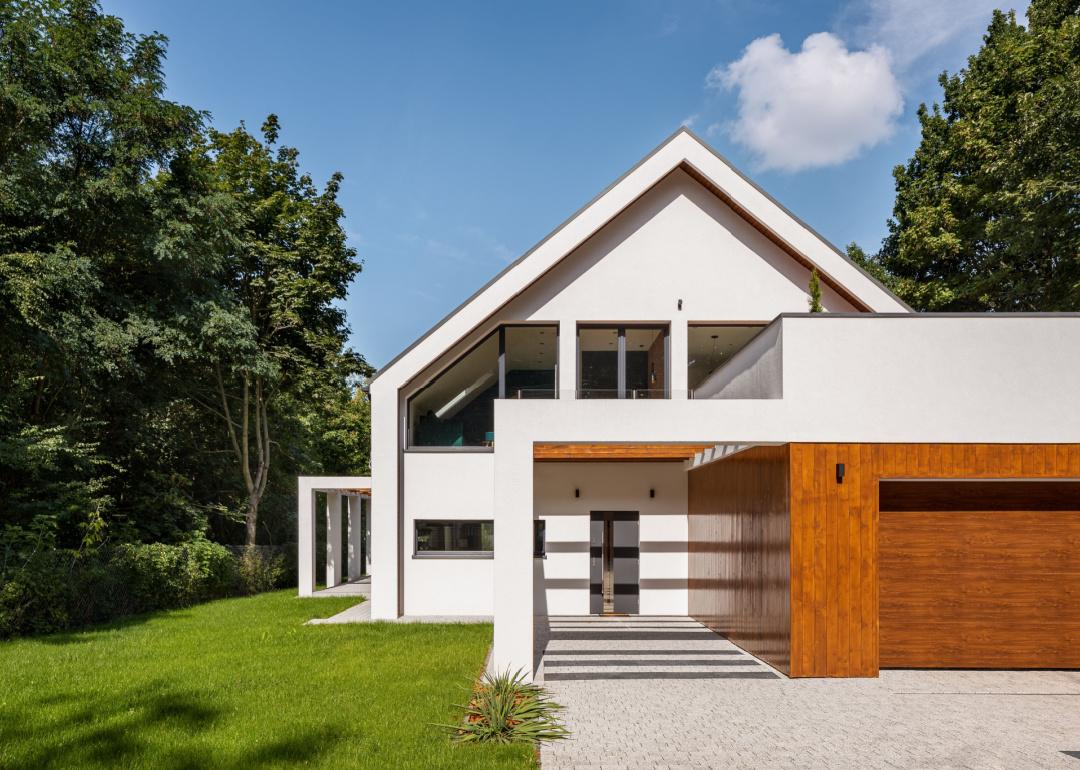
Dariusz Jarzabek // Shutterstock
Minimalism (2000–today)
Exterior of white minimalist modern home.
Minimalist architecture is rooted in cubism, Japanese Zen, and Bauhaus designs—favoring clean, simple lines and calm, neutral colors that result in a simple, clutter-free space. Minimalism forgoes ornamentation to emphasize structure, lights, materials, and space.
The New York City house of sculptor Donald Judd, an icon of minimalist design, is one of the most famous minimalist homes designed.
This story originally appeared on New Jersey Real Estate Network and was produced and
distributed in partnership with Stacker Studio.